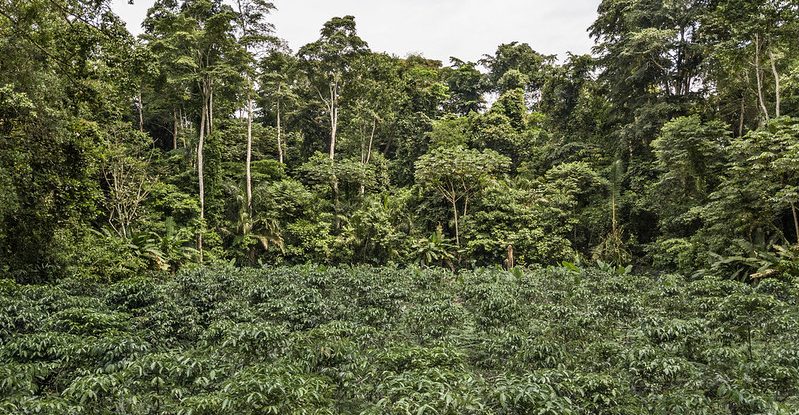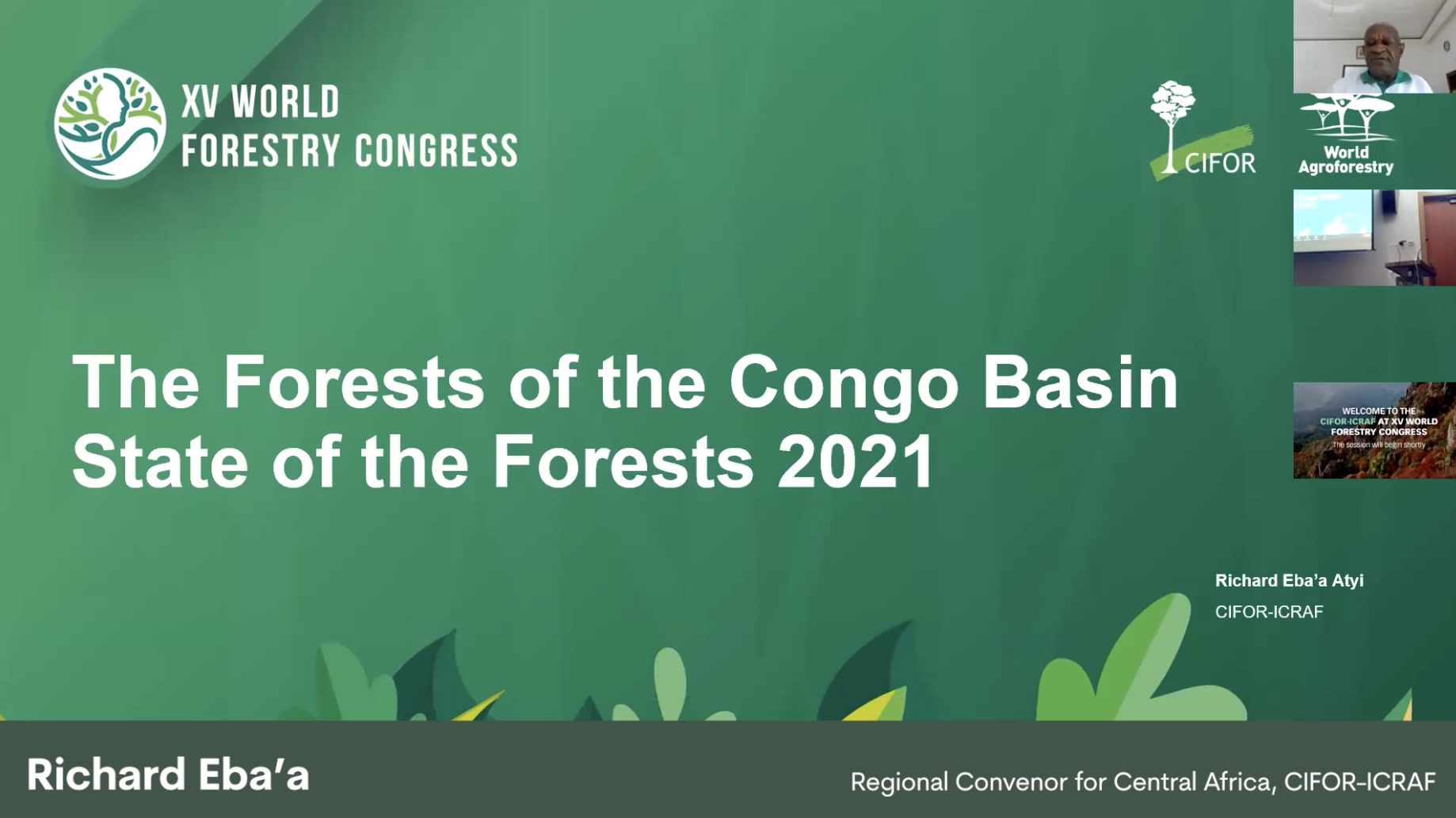As climate change and global heating approach critical points of no return, experts gathered in Seoul at the World Forestry Congress to assess an often overlooked but increasingly important resource for limiting carbon emissions— the forests of Central Africa.
“At the very heart of the forests of Central Africa is their ecosystems and their management,” said Robert Nasi, managing director for the Center for International Forestry Research and World Agroforestry (CIFOR-ICRAF), in a presentation at a side event. “If we want to achieve the objectives of Glasgow — or COP 26 — we must know the state of these forests and stay committed.”
Coinciding with the release of the State of the World’s Forests 2022 by the U.N. Food and Agriculture Organization (FAO), the session centered on newly released findings from the Congo Basin Forests: State of the Forests 2021 report recently published by the Central African Forest Observatory (OFAC).
Spanning roughly 240 million ha, 89 million ha of them primary forests, Central Africa’s forests extend across six countries and include the Cuvette Central peatlands — a vital carbon sink — and the Congo Basin — the world’s second-largest rainforest. The forests are rich in biodiversity, with thousands of endemic species of plants and wildlife. Also in the mix are local communities and Indigenous groups that value the landscape culturally and for their food and livelihoods.
However, recent threats have emerged with agricultural plantations, logging, mining, and charcoal production among the activities driving deforestation. One study determined that Central Africa has lost more than 6 million hectares of humid primary forest since 2001, or the equivalent of 6 million rugby fields.
“We have a dynamic of deforestation and degradation that continues to increase in the Central African basin,” said Verina Ingram, a researcher and associate professor at Wageningen University & Research. “If this continues, 27 percent of Central Africa’s undisturbed rainforests present in 2020 will be gone by 2050.”
“Currently, despite their comparatively smaller area, the undisturbed forests of Africa absorb more carbon per ha than those in the Amazon basin,” added speaker Phillippe Mayaux, team leader for biodiversity and ecosystems at DEVCO.
Their remarks underscored the importance of addressing the pressing issues identified in The State of Central Africa’s Forests. Prepared in 2021 by the Central African Forests Commission (COMIFAC) and the Congo Basin Forest Partnership , the report assesses the natural and socio-economic health of Central Africa’s tropical forests.
Echoing the report’s findings, Richard Eba’a Atyi, regional convener for Central Africa for CIFOR-ICRAF, said:
“There are three major challenges in the management of forests in Central Africa. The first is the issue of land use planning. The second is the restoration of forest landscapes and ecosystems as part of the U.N. Decade on Ecosystem Restoration 2021-2030. The third is ensuring the rights of local populations and Indigenous people in all forest management policies and conservation plans.”
Against this backdrop, several speakers recommended ways to better support the forests of Central Africa at the policy level and through action on the ground including:
- Using satellites to monitor forest distribution and carbon stocks in hard-to-reach areas
- Collecting and synthesizing regional-level data
- Ensuring government transparency and accountability on land restoration and carbon sequestration goals
- Aligning land restoration between countries and across borders
- Involving local communities in land use management
- Monitoring for zoonotic and infectious diseases
- Combatting deforestation in commodity production
- Reforesting areas that have been degraded
- Involving regional governments in negotiations on certifications in supply chains
- Implementing UN REDD+ projects
- Substantially boosting financing from the private sector, foundations and donors
In one promising development, at the COP26 climate summit in Glasgow last fall donors pledged $1.5 billion to support forest protection and management in the Congo Basin.
But more needs to be done to ensure Central Africa’s forests put an emergency brake on climate change.
Said Hervé Maidou, COMIFAC executive secretary, “The forests of Central Africa and the Congo Basin are most important globally for the sequestration of carbon and in maintaining planetary climate balance.”
We want you to share Forests News content, which is licensed under Creative Commons Attribution-NonCommercial-ShareAlike 4.0 International (CC BY-NC-SA 4.0). This means you are free to redistribute our material for non-commercial purposes. All we ask is that you give Forests News appropriate credit and link to the original Forests News content, indicate if changes were made, and distribute your contributions under the same Creative Commons license. You must notify Forests News if you repost, reprint or reuse our materials by contacting forestsnews@cifor-icraf.org.

